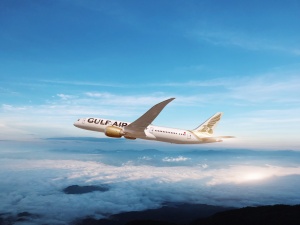Boeing suspends deliveries of 787 Dreamliner

Boeing has suspended deliveries of its new 787 Dreamliner aircraft until it resolves a battery problem, according to reports.
The US aerospace giant revealed in an email that it plans to continue building the plane but will not deliver any until it has full safety approval.
This latest announcement follows a disastrous week for Boeing in which all 50 of Boeing’s 787s in service around the world were suspended from flying following two incidents, including a fire which is thought to be linked to its batteries.
“We will not deliver 787s until the FAA approves a means of compliance with their recent Airworthiness Directive concerning batteries and the approved approach has been implemented,” said a Boeing spokesman in an email.
Dreamliner
ADVERTISEMENT
With over 800 planes ordered before the first completed aircraft rolled off the production line, the launch of the Boeing 787 Dreamliner appeared to be one of the most successful in aviation history.
Airlines around the world queued up to order the revolutionary new plane.
Made from composite materials, it was significantly lighter than its competitors, allowing for greater fuel efficiency and therefore lower costs. No small feat in these straighten times.
Boeing had also gone all out on the interior, promising cleaner air, a lower cabin altitude, higher humidity, bigger windows and more overhead storage space for passengers.
In short, it seemed like a dream come true for airlines.
But it now seems Boeing – despite spending upward of $32 billion on the project – may have overreached in its ambitions.
A horrendously convoluted supply chain delayed construction of the first Dreamliners and set the whole project back years as the aviation giant sought to untangle the mess, eventually purchasing supplies it had originally outsourced work to.
Early planes also came in overweight, reducing the much vaunted fuel efficiency, and sending designers back to the drawing board to work on some elements of the plane.
Testing was also delayed when an electrical fire forced an emergency landing of a Dreamliner in Texas, while the National Labour Relations Board in the United States alleged a Dreamliner production line in
South Carolina violated two sections of the National Labour Relations Act.
The case was later dropped.
Deliverance
Putting all these problems behind it, the Dreamliner was finally delivered to launch customer All Nippon Airways in late 2011.
ANA launched the 787 on its first commercial flight, from Narita to Hong Kong, on October 26th, reporting a 20 per cent drop in fuel consumption, and suggesting to Boeing all the hard work had been worthwhile.
Over the coming months Air India (six aircraft), Ethiopian Airlines (four), Japan Airlines (seven), LAN Airlines (three), LOT Polish Airlines (two), Qatar Airways (five) and United Airlines (six) all took deliveries of the new Dreamliner, while ANA built its fleet to 17 planes.
Demand continued to increase, with Boeing presently expecting to deliver over 800 of the planes to 58 customers over the next decade.
In November last year Boeing increased the production rate of the aircraft to ten per month, up from 8.5, with the project apparently finally gaining traction.
But this honeymoon period now appears to have been short lived.
United Airlines was among the first to report problems, with a Dreamliner flight forced to make an emergency landing because of an electrical problem in December last year.
In the same month Qatar Airways grounded one of its 787 Dreamliners after several manufacturing faults caused electrical problems - similar to those that affected the United plane.
Earlier this month All Nippon Airways reported a crack in the window on the pilot’s side of the cockpit of a Dreamliner, starting a spiral of negative headlines which would culminate in the grounding of the plane.
The same airline later reported another Dreamliner flight, shuttling between Haneda and the southern Miyazaki prefecture, experienced a delay due to an oil leak from a generator inside an engine.
Last Wednesday, ANA again cancelled a 787 flight from Yamaguchi to Tokyo because of a brake problem, while Japan Airlines cancelled a Boston to Tokyo flight after about 40 gallons of fuel spilled during taxiing.
On Monday an electrical fire broke out on board a Japan Airlines Dreamliner, shortly after it landed in Boston, following a flight from Tokyo.
No serious injuries were reported during any of the incidents.
However, the electrical fire appears to have been the final straw, with the Japanese transport ministry launching an investigation. Both ANA and Japan Airlines grounded their fleets.
This lead was followed by the Federal Aviation Authority, which issued an emergency airworthiness directive - requiring all Boeing 787 Dreamliners to temporarily cease operations.

